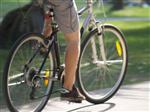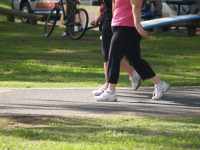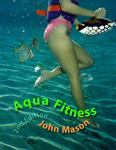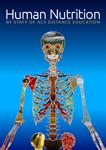Flexible learning - study around your existing life commitments - whenever and wherever suits you!
This highly practical course helps you to understand what fitness really is, and enables you to develop a balanced fitness program for yourself or for people around you covering topics such as the human body, principals of exercise programming, and weight control.
The single most important fact to understand about human fitness is the complexity of the human body, and the fact that this complexity makes fitness multi-faceted. No-one can be completely fit by just eating right or just exercising. In a nutshell, fitness comes only by developing a balanced approach to life in all of the important spheres of life...
- Eat the right food – a nutritious balance of essential food groups
- Eat healthy foods that you are not allergic or sensitive to which provide all the necessary nutrients in adequate but not in excessive amounts
- Exercise all of the parts of the body regularly and adequately
- Dedicate time to relaxation, to rest the body both physically and mentally
This course is suitable for someone who wants to become healthy and fit, and help their friends and family as well. It is also an excellent foundation course for people who want to become health and fitness professionals.
Get started in the trillion dollar wellbeing industry - set to boom in the next decade.
Lesson Structure
There are 8 lessons in this course:
- Reasons for Fitness
- Basic components of physical fitness, reasons for fitness, fitness testing and evaluating endurance.
- Understanding your body
- Body structure, cardio respiratory system and aerobic/anaerobic energy.
- Testing your fitness
- Types of fitness tests, differences due to age and gender and evaluating different types of fitness tests.
- Exercises for specific purposes
- Types of exercise, developing physique, basic conditioning exercises, and exercises for specific problems.
- Nutrition and Weight control
- Nutrition basics, weight control and planning a diet.
- Endurance and Suppleness
- Assessing how supple your body is, exercises that increase suppleness.
- Home Medicine and First Aid
- Basic first aid, acupressure and alternative vs mainstream medicine.
- Designing an Exercise Program
- Designing a program, assessing fitness and designing an appropriate program.
Each lesson culminates in an assignment which is submitted to the school, marked by the school's tutors and returned to you with any relevant suggestions, comments, and if necessary, extra reading.
What You Will Do
- Perform different types of fitness tests
- Perform a variety of different exercises
- Interview an inactive person to assess their fitness goals
- Determine which muscles are used in certain exercises
- Plan a diet and a weight loss diet
- Suggest exercises to improve suppleness
- Contact medical training facilities to find out about courses offered
- Suggest first aid procedures for a number of given situations
- Design more than one fitness program
Why bother getting fit?
 There are so many aspects which can be covered in this and hopefully you will become aware of some theories you were not previously familiar with. Many people in modern society in developed countries work in jobs which are considered to be sedentary; the obvious example links to the prevalent use of computers in the workplace and less agricultural and manual labour employment. This has lead to a range of health issues that are becoming more prevalent, such as obesity, diabetes, and heart disease. Because people are often not exercising throughout the day in their job roles, it has become crucial that people make the effort to engage intentionally in exercise outside of their working lives to maintain good health. There are so many benefits to exercising. Here are some of them:
There are so many aspects which can be covered in this and hopefully you will become aware of some theories you were not previously familiar with. Many people in modern society in developed countries work in jobs which are considered to be sedentary; the obvious example links to the prevalent use of computers in the workplace and less agricultural and manual labour employment. This has lead to a range of health issues that are becoming more prevalent, such as obesity, diabetes, and heart disease. Because people are often not exercising throughout the day in their job roles, it has become crucial that people make the effort to engage intentionally in exercise outside of their working lives to maintain good health. There are so many benefits to exercising. Here are some of them:
- Makes you live longer: it has been found that people who exercise regularly can extend their lives. It has also been recorded that if a man maintains exercise and fitness levels throughout his life, there is evidence to suggest the heart muscle beats as strongly at 70 years old as when he is 20 years old. Physical training stimulates the production of vascular endothelial growth factor (VEGF) protein, which encourages the growth of new blood vessels, which supports prolonged healthy heart function.
- Strengthens heart muscle tissue: the health of the heart can be maintained through exercise as the strength of the heart muscle is actually increased. Like any muscle in the human body, the heart muscle can be strengthened when exercised.
- Improves the immune system: the response of the immune system (killer T-cells specifically) is enhanced if someone carries out regular exercise. This means those who exercise are less likely to suffer from cold and minor infections.
- Reduces the risk of obesity and the associated complications of the condition: obesity is known to be linked to the onset of coronary heart disease and type II diabetes. Additionally, being active (walking) before eating a meal also is known to improve blood vessel function, which contributes to a lowering of triglycerides in the blood by up to as much as 25% after eating.

- Greater self-esteem through improved body image: it is widely accepted that exercising and being generally active leads to a feeling of satisfaction and personal acceptance. People who regularly exercise are more likely to have higher self-esteem and greater satisfaction with their bodies.
- Protects against cancers and strokes: blood pressure is reduced through regular exercise and therefore the risk of stroke can be reduced dramatically. It has been suggested, although not scientifically proven, that colon cancer may be prevented through regular exercise as which helps to maintain general colon health thus maintaining the speed at which food moves through the bowel and colon thus not allowing for a build up of toxins and waste products to remain inside the body. A healthy colon also makes for efficient digestion of nutrients from food.
- Improves intimacy: long-term research carried out at the University of California has shown that people who exercise regularly (at least 3 times per week) and to moderate intensity are likely to have more frequent sexual intercourse with their partners than those who don’t exercise. The research conducted was also able to conclude that sexual pleasure was increased in those people who exercise than those who don’t. This may also increase the bond between two people.
- Flexibility: exercise helps to maintain flexibility in the joints and strong lean muscles which is important for movement into mature years.
- Protects against arthritis and osteoporosis: the exercise of running has been found to increase bone density and lessen the effects of mineral (calcium) loss from bones thus protects someone from osteoarthritis longer than people who don’t exercise.
- Protects against Parkinson’s disease: exercise increases the body’s ability to encourage dopamine-producing mechanisms which protect brain cells against this degenerative disease. (This area of biological science is extensive; you may choose to do further study on this).
- Helps dyslexia: it has been suggested that by improving fine motor skills such as catching or throwing a ball can increase stimulation to the cerebellum which is the part of the brain used for movement. Overall this leads to increased stimulation related to many other motor and cognitive functions.
- · Enhances elimination of toxins: Exercising helps eliminate toxins from the system a number of ways. By breathing deeply during exercise, toxins are eliminated through the lungs. Exercise stimulates the lymphatic system, which is an important component in the immune system. Regular exercise helps to purify the blood and stimulate waste removal. Sweating during exercise helps eliminate toxins through the skin. And exercise is beneficial for the digestive system to effectively gain nutrients from food and eliminate waste.
 Quality time with family and friends: exercise and keeping fit is an activity which can be carried out with other people. Often keeping fit is a social activity in itself. It enables you to spend time with friends, exchange ideas, off load personal issues and enjoy laughter, which of course is beneficial to health in itself. It may also be a way to meet and engage with people in a society that is becoming more isolated and less community focused. It allows parents to spend time with their children, for example, bike riding together, playing football in the park. Although these are quite unstructured activities, they exude to personal fitness whilst strengthening bonds with family and friends in the process.
Quality time with family and friends: exercise and keeping fit is an activity which can be carried out with other people. Often keeping fit is a social activity in itself. It enables you to spend time with friends, exchange ideas, off load personal issues and enjoy laughter, which of course is beneficial to health in itself. It may also be a way to meet and engage with people in a society that is becoming more isolated and less community focused. It allows parents to spend time with their children, for example, bike riding together, playing football in the park. Although these are quite unstructured activities, they exude to personal fitness whilst strengthening bonds with family and friends in the process. - Be more relaxed at home: exercise helps to reduce muscle tension. Exercise is a way to reduce stress and muscle tension, this in turns allows for important ‘relaxation or down’ time at home to be enjoyable. By making the most to relax, people then can become revitalised and recharged before facing the next day or week ahead. Being relaxed at home may mean spending more quality time with family too – a very important aspect of wellbeing.
- Enjoy a better quality of sleep: exercised people generally have a better quality of sleep, sleeping deeper and sounder than others, as a result they have less desire to nap during the day and feel more refreshed in the morning. Regular exercise starts to improve sleep quality after 8 weeks.
- Perform better at work – improves productivity: regular exercise has been known to make people generally more motivated and more confident in all aspects of life including their employment. In the workplace people are likely to feel more responsive and energetic. Employers experience increased staff morale, reduced absenteeism, improved creativity and productivity and more efficient decision making.
- Beats the blues: The positive effects of exercise on conditions such as anxiety and depression have been studied since the 1980s. It started with the true story of the man who was suicidal and tried to induce a fatal heart attack by running as fast as he could for as long as physically possible. He attempted suicide in this manner several times and found, not only did he not have a heart attack; he actually started to feel better. This is caused by the release of endorphins in the brain – this creates a short-term feeling of elation. Other research identifies serotonin and norepinephrine – also elevated by exercise – act as mechanisms for improved mood.
From this comprehensive list you can see the reasons for achieving and maintaining personal fitness are varied and all extremely important – physically fit people lead generally longer and happier lives.
Reference Books

Buy a copies of our principal's books on fitness from our online bookshop, including:
Aquafitness by John Mason
Hard copy (paperback printed book) -
http://www.acsbookshop.com/product-aqua-fitness-pdf-ebook-5593.aspx
Learn more about healthy eating with the ACS Human Nutrition E-book:

Download here: http://www.acsbookshop.com/product-human-nutrition-pdf-ebook-5709.aspx